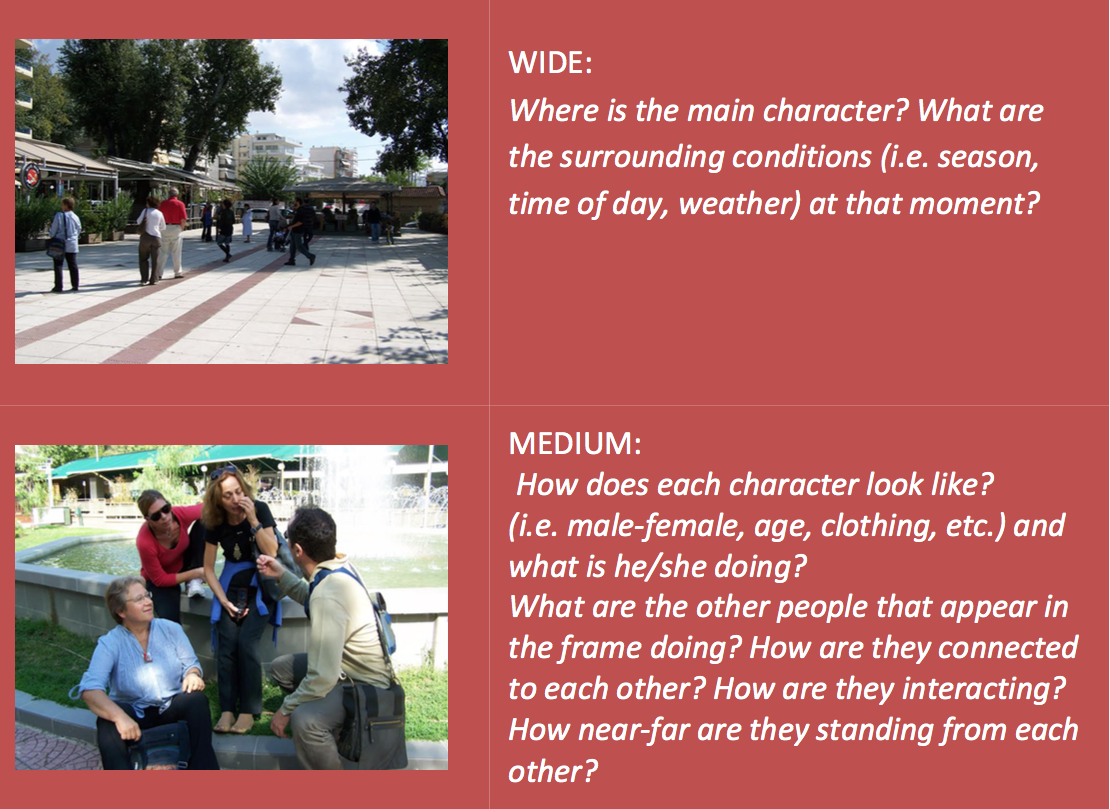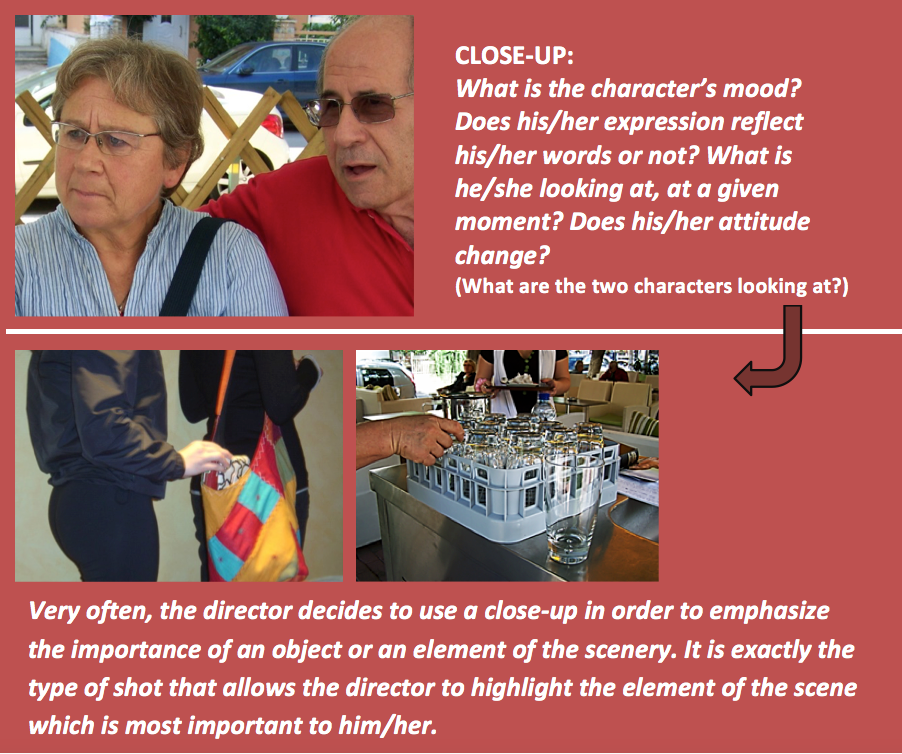Frames and Shots
The border of an image, along with all the content within it, is called a frame. In this context any still image, or even any moving image that we see at each specific moment on a screen, constitutes a frame. In cinema and television, entities of uninterrupted moving images called shots, can be the visual equivalent of still frames. A shot is a moving image with some duration and is usually named after its most dominant frame.
Depending on how near or far away the subject (usually a person) appears -in other words depending on how much space within an image is filled by a subject- a frame or a camera shot can be:
Wide: The main character appears to be far away, while the image shows an ample amount of his/her surroundings (i.e. scenery, houses, etc.). A wide shot focuses more on providing information regarding the place where the action is taking place (picture below).
Medium: The main character is dominant in the picture. While at the top and bottom of the frame there is no free visual space, this type of shot allows for other subjects or surroundings to be visible at the right and left. In this type of frame, the viewer focuses mostly on the main character and his relationship with other people (picture below).

Close-up: The main character (or the subject being depicted) is not shown as a whole. A certain feature of the main character takes up the whole frame (for example his/her face, or just an arm, etc.) The director can use a close-up to provide the audience with the opportunity to closely observe the main character and to focus on his/her emotions at that particular scene (picture below) or realize a specific detail that the viewer might not otherwise observe in a wider frame.

In this introduction, we hold the view that humans are the means of reference for defining each frame. Therefore, a frame showing, for example, a whole spoon with no free surrounding space WILL NOT be defined as a ‘medium shot of the spoon’, but rather as a ‘close-up ’, using as criteria that, if in this image a person was holding the spoon, only the palm of his/her hand would fit in the specific frame. Also, the above three types of frames (or equivalent shots) are considered only for educational purposes. Professionals in cinema or TV use a much wider range of types of shots.
The publication was created as part of the project: EMELS.
This publication reflects the views only of the author, and the Commission cannot be held responsible for any use which may be made of the information contained therein.

